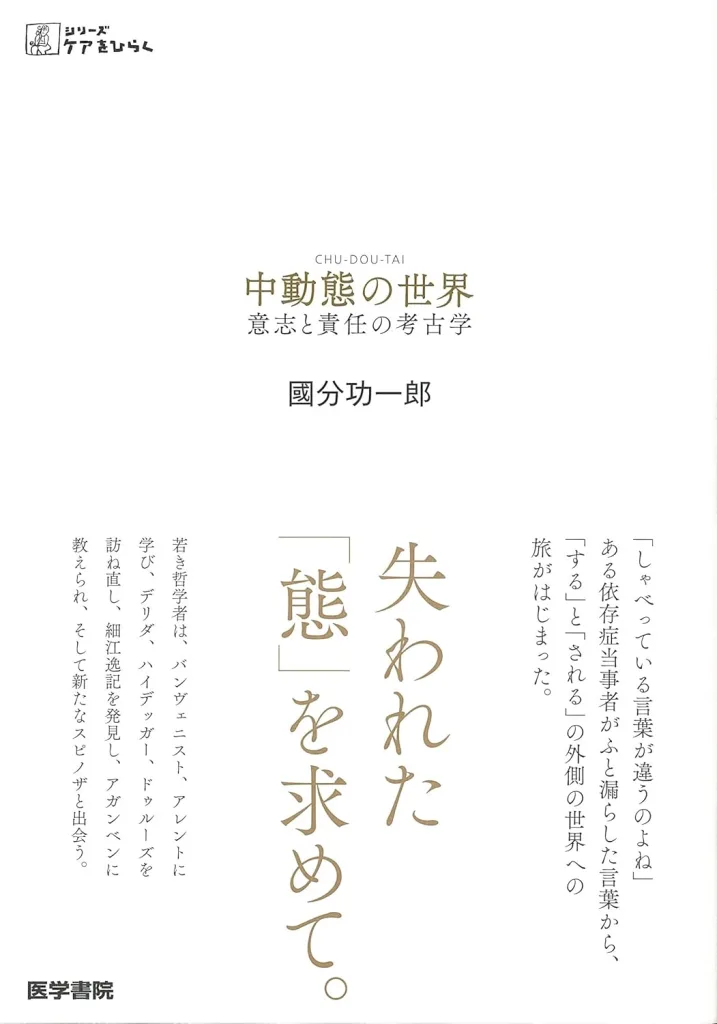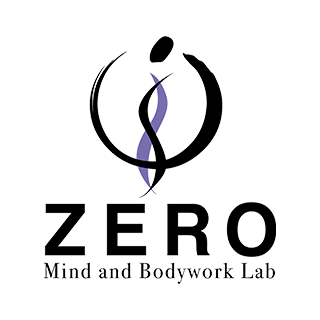Introduction
Hello, I’m Hidefumi Otsuka, a Certified Rolfer offering sessions in Shibuya, Tokyo.
In this post, I’d like to explore one of the most essential aspects of Rolfing®—what we call “neutrality”—through the lens of philosopher Koichiro Kokubun’s book, The World of the Middle Voice: An Archaeology of Will and Responsibility (only in Japanese).

I believe that in the process of organizing the body, there exists a “third way of being” that transcends both the active (“doing”) and the passive (“being done to”). This question, I feel, is closely connected to the kind of transformation that actually occurs during a Rolfing session.

What is the Middle Voice?
“Did I do it? Or was it done to me?” — There are actions in life for which such questions lose their meaning.
The middle voice refers precisely to those ambiguous, in-between movements and changes.
The term originates from ancient Greek, a time when there was not yet a clear distinction between active and passive grammatical voice.
For instance, when expressing “washing the body” in the middle voice, it doesn’t mean “washing oneself” or “being washed by someone else,” but rather, an act of cleansing that seems to arise within the person—it simply happens.
In philosophy, this kind of intermediate state has long held great significance. While thinkers like Plato and Aristotle distinguished sharply between “doing” and “being done to,” modern philosophers such as Heidegger and Merleau-Ponty focused on what emerges within relationships—on the process by which “something comes to pass” not through will alone, but through the interplay of context, body, and other people.
In Kokubun’s words:
“The middle voice is a grammatical form that predates the division between active and passive voice.
It is neither about acting nor being acted upon, but about a mode of action that arises in connection with something.”
In everyday life, we tend to frame actions through the binary of “doing” (active) or “being done to” (passive). But as The World of the Middle Voice reveals, there’s a third domain—middle voice actions—that lies at the heart of bodily and psychological transformation.
The following table helps illustrate the distinction between active, passive, and middle voice, using examples from Rolfing sessions:
Table: Active / Passive / Middle Voice in Rolfing Context
| Voice | Description | Subject’s Role | Example (Rolfing Context) |
|---|---|---|---|
| Active | The subject performs the action | Willfully acting | “I pulled my shoulders back to fix my posture.” |
| Passive | The subject receives the action | Being acted upon | “My shoulders were massaged and moved.” |
| Middle | Between active and passive; being in a process | Immersed in the process | “My breath deepened naturally when touched.” |
Rolfing and Middle-Voice Transformation
The Philosophy of Jeff Maitland
Jeff Maitland describes the practitioner’s role as follows:
“The role of the practitioner is not to cause healing but to hold the space in which healing can occur.
You don’t go looking for something—you let ‘what is’ show itself.”
This perspective captures the core of what it means to be “neutral” in the session—neither imposing nor withdrawing, but allowing.
Ida Rolf’s Philosophy and the Middle Voice
“Rolfing is a series of goals, not a series of techniques.”
— Ida P. Rolf
In this sense, Rolfing is not about manipulating outcomes through technique. Rather, it is a shared process in which space is held for change to occur as the body moves toward a goal.
Testimonials of Middle-Voice Transformation
Below are comments from past Rolfing clients, which reflect experiences of middle-voice transformation:
“As my body came into balance, it felt like my thoughts also cleared. I could see more clearly what I needed.”
— TU (female, 30s, freelance announcer)
“I realized my mind and body were linked, and I felt a solid foundation forming within myself.”
— KS (male, 20s, office worker)
“My knock-knees improved, and my voice came out more clearly when singing. I began to feel a sense of trust between my body and mind.”
— KH (female, 30s, company employee)
What these voices have in common is not a sense of trying to change, but rather the feeling that change happened from within. This is the essence of middle-voice transformation, which often emerges in the space held during Rolfing.
Conclusion: Change Is Not Something You “Make”—It Is Something That “Arrives”
The “neutral” way of being that Rolfing values lies not in the binary of “doing” or “being done to,” but in a third field—an in-between space.
It’s not about forcing or resisting change.
It’s about surrendering to the process itself—letting go of control and allowing transformation to emerge.
This, I believe, is the true essence of what unfolds in a Rolfing session.
I hope this post offers some insight or inspiration.
References
- Koichiro Kokubun: The World of the Middle Voice: An Archaeology of Will and Responsibility (in Japanese).
- Jeff Maitland, Embodied Being: The Philosophical Roots of Manual Therapy
- Ida P. Rolf, Rolfing and Physical Reality

